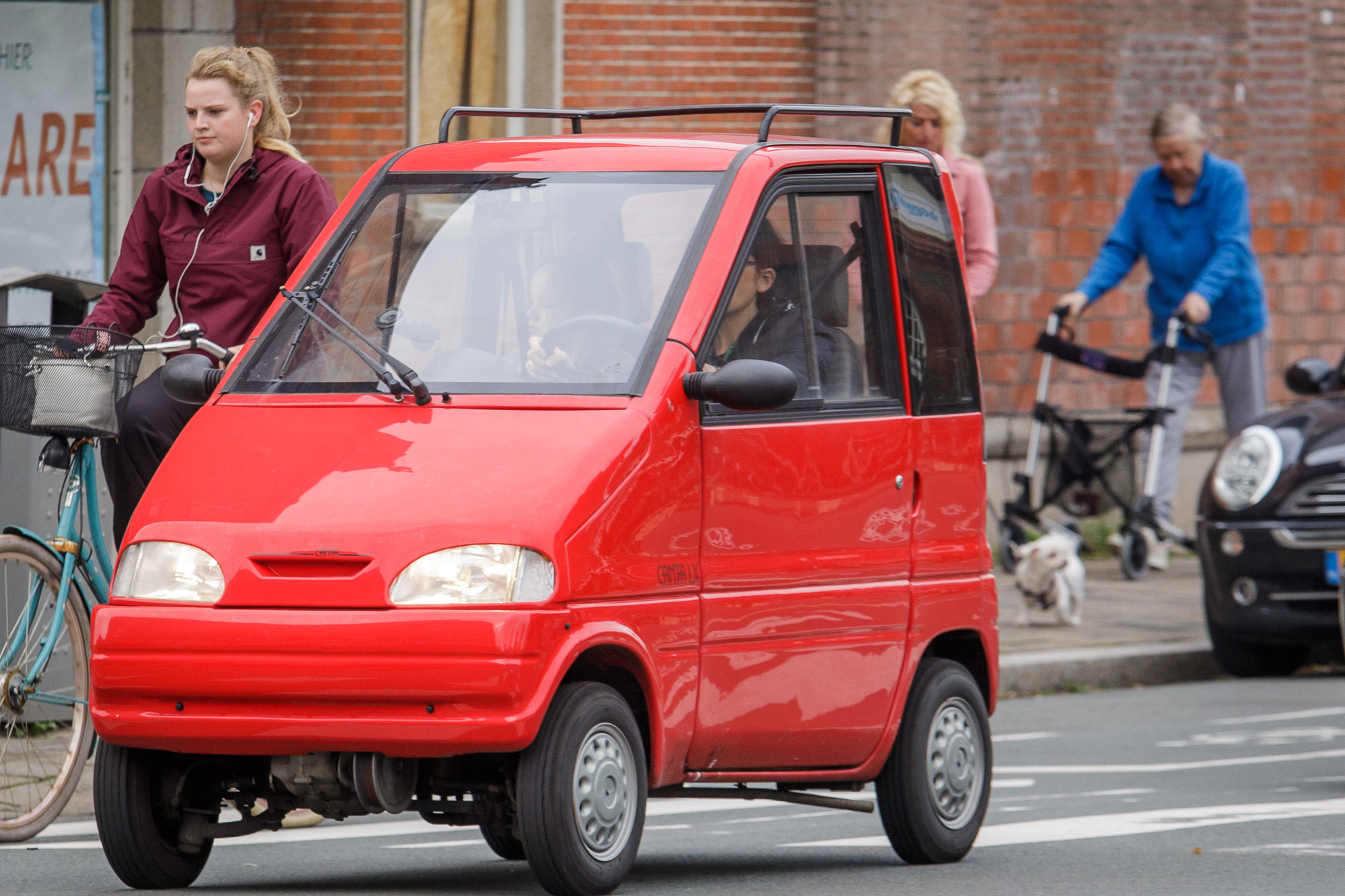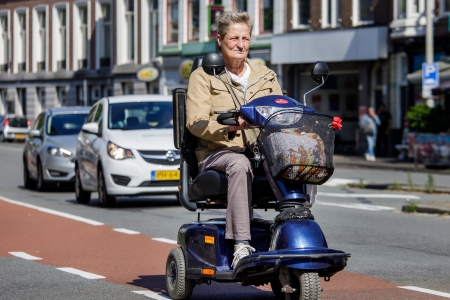Mobility scooters
A mobility scooter is a disability vehicle that is mainly used by road users with reduced mobility. It is electrically powered and it has three, four or five wheels. Most mobility scooters are open, but some are covered. Like a mobility scooter, an electric wheelchair is legally a(n) (open) disability vehicle.


Enclosed disability vehicle
Enclosed disability vehicles have an enclosed body. Most of them have a petrol engine, although more and more are electrically powered nowadays. They have four wheels and a maximum width of 110 cm. Examples of enclosed disability vehicles are Canta, Amica, Arola en Mini Cruiser City.

Microcar
According to the law, a microcar is a moped (and therefore not a disability vehicle). It has four wheels (sometimes three), an enclosed body, usually a diesel engine, and is generally wider than an enclosed disability vehicle, which makes it resemble a normal car.


The dimensions of the Birò (on the right) make it resemble an enclosed disability vehicle, but since early 2019 it has been classified as a microcar and the owners have to follow the corresponding rules, e.g. a ban on pavement parking and a ban on use of bicycle tracks ([1]; see the question What rules apply to using a mobility scooter, an enclosed disability vehicle or a microcar?).
